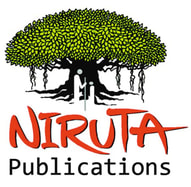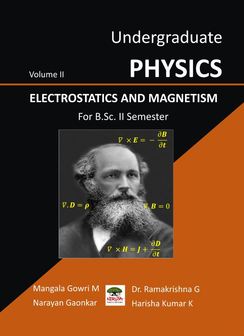|
Mangala Gowri M, Dr. Ramakrishna G, Harisha Kumar K, Narayan Gaonkar Pages. 343 PREFACE Higher education in India today is witnessing a revolution of sorts. Gone are the days when classroom teaching was considered an indispensable aspect of the educationsystem. The ubiquitous nature of the internet and new media has made a variety of learning tools available to a student at his or her bidding. Teacher is no more a role, but a function. Contrary to the common opinion, integration of technology with education, instead of undermining the functions of a teacher makes them even more emphatic. These changing times are as exciting as they are challenging. The new dynamics of education have presented a ‘predicament’ to the universities and other institutions of learning. On the one hand, the field of education needs to go deeper encompassing new platforms and avenues of learning. And on the other, it requires to grow broader and inclusive, striving tirelessly and continuously to reach every single individual craving for and in need of it. The Choice Based Credit System (CBCS) being adopted widely by universities in India is one of the ways to make education grow deep. This new system has many advantages. Not only does it make the process of learning flexible, but also helps in self-learning. It necessarily adds new interdisciplinary dimensions to learning. Hence, the curriculum and course material that our eager students are provided with require to transform themselves keeping the goals and purposes of the CBCS in mind. It gives us great pleasure to present this textbook Undergraduate Physicsto our readers. This book is written to allow its readers achieve a high degree of conceptual clarity without them having to labour too much for it. As the major chunk of our intended readership comprises of students, we have strived to make physics easy and, what more, enjoyable. Relevant information about many renowned scientists’ lives and works has been incorporated. We have been conscious enough also to include material that would help students in preparing for different assessments and evaluations. Definitions have been highlighted; summaries of various units/topics have been provided; worked-out examples are on offer; conceptual questions have been framed; model question papers find a place; and a good number of figures, graphs, tables and charts are included. We believe that this book is going to benefit its readers immensely. We express our heartfelt gratitude to every single soul involved in bringing out this book. We have been fortunate enough to receive encouragement and kind assistance from various quarters. Tumkur university, which the authors of this book have affiliation with, and “Niruta”, who have published this book, deserve a special mention here. Yet, as this is the first attempt of the kind for the authors, errors and lapses could have occurred. Such lapses, if any, are our own. We only hope that the positives of the book will outweigh its negatives, if any. We also hope that reading this book will be pleasurable for you. Authors 30 December 2016 Tumakuru Contents Electrostatics and Magnetism
UNITI 1.1 Vector Analysis Graphical Representation of Vectors Types of Vectors Addition of vectors Parallelogram Law of Vector Addition Subtraction of Vector Resolution of Vectors Laws of Vector Algebra Scalar Field Vector Field Dot Product Cross Product Triple Products Differential Calculus Geometrical Interpretation of the Gradient The Divergence The Curl Product Rules Second Derivatives Line integral Surface Integrals Volume Integrals The Fundamental Theorem for Gradients Gauss Divergence Theorem Stoke’s Theorem Solved Examples Exercise Questions Conceptual Questions 1.2 Electrostatics Electric Flux Gauss’ Law Electric Field due to Point Charge An Infinite Line of Charge Uniformly Charged Spherical Shell Uniformly Charged Solid Sphere Summary Electric Potential Energy Electric Potential Potential due to Point Charge Potential due to a Dipole Potential due to Spherical Shell Potential due to Solid Sphere Summary Capacitance Parallel Plate Capacitor Capacitance of Concentric Spherical Shells Capacitance of Isolated Sphere Cylindrical Capacitor Energy per Unit Volume in Electrostatic Field Dielectric medium Polarization Bound Charges Electric Displacement Dielectric Constant Parallel Plate Capacitor with Dielectric Summary Solved Examples Exercise Questions Conceptual Questions UNIT II 2.1 Magnetostatics Oersted Experiment Biot-Savart’s Law Right hand thumb rule for straight Magnetic Field Due to Current in a Long Straight Conductor Magnetic Field Due to Current in a Straight Conductor of Finite Length Magnetic Field along the Axis of a Solenoid Magnetic Field Due to Current Passing through Circular Coil Divergence of a Magnetic Field Curl of a Magnetic Field Magnetic Vector Potential Ampere’s Circuital Law Magnetic field at a point due to a straight current carrying conductor Magnetic field on the Axis of a Solenoid 2.2 Magnetic Fields and Force Motion of a Charged Particle in Magnetic Field Fleming’s Left Hand Rule Force on a Current Carrying Conductor Torque on a Current Loop in a Uniform Magnetic Field Ballistic Galvanometer Charge Sensitivity of Ballistic Galvanometer Current Sensitivity of Ballistic Galvanometer Voltage Sensitivity of Ballistic Galvanometer Figure of Merit Effect of Damping Uses of BG Determination of High Resistance by Leakage Using BG Dead Beat Galvanometer 2.3 Electromagnetic Induction Magnetic Flux Coil-Magnetic Experiment Coil-Coil Experiment Faraday’s Laws of ElectromagneticInduction Lenz’s Law Eddy Currents (OR) Foucault Currents Disadvantage of Eddy Currents Uses (Advantages) of Eddy Currents Self-induction Expression for Self-inductance of Coil Mutual Induction Expression for Energy Stored in the Coil Solved Examples Exercise Questions ConceptualQuestions UNIT III 3.1 Magnetic Properties of Materials Origin of Magnetism Gauss’s Law of Magnetism Intensity of Magnetization Magnetizing Force or Intensity Magnetic induction Permeability Magnetic Susceptibility Classification of Magnetic Materials Paramagnetic Substances Derivation of Curie’s law (Langevin’s Theory) Diamagnetic Substances Ferromagnetic Substances Curie-Weiss law Magnetic Domain Antiferromagnetism Ferrimagnetism Hysteresis Hysteresis Loss Solved Examples Exercise Questions Conceptual Questions 3.2 Maxwell’s Equations and Electromagnetic Waves Equation of continuity of current Displacement current Maxwell's equations Gauss’s Law for Electric Fields Gauss’s Law for Magnetic Fields Faraday’s Law of Induction Generalized Ampere’s Law EM Waves in Vacuum EM Waves in Isotropic Dielectric Medium Poynting’s Theorem Transverse nature of EM waves Polarization Solved Examples Exercise Questions Conceptual Questions UNIT IV 4.1 Transient Phenomena Electric Current Electrical Potential Difference Ohm’s Law IR Drop Kirchoff’s Current Law Kirchoff’s Voltage Law Energy Storing Circuit Elements Transient Current Series RC Circuit Series RL Circuit Series RLC Circuit Solved Examples Exercise Questions Conceptual Questions 4.2 AC Circuits Alternating Current RMS Value of AC Current Form Factor Phase Analysis of AC Circuits AC Circuit with Pure Resistance AC Circuit with Pure Inductance AC Circuit with Pure Capacitance j-operator representation Series Resonance Circuit Resonance Quality Factor Parallel Resonance Circuit Solved Examples Exercise Questions Conceptual Questions 4.3 Network Theorems Voltage Source Current Source Thevenin’s Theorem Norton’s Theorem Superposition Theorem Maximum Power Transfer Theorem Solved Examples Problems Questions Conceptual Questions Appendix 1 Syllabus for Semester II Appendix 2 Model Question Paper 1 Appendix 3 Model Question Paper 2
0 Comments
Leave a Reply. |
50,000 HR PROFESSIONALS ARE CONNECTED THROUGH OUR NIRATHANKA HR GROUPS.
YOU CAN ALSO JOIN AND PARTICIPATE IN OUR GROUP DISCUSSIONS. Archives
July 2022
Categories
All
|
SITE MAP
SiteTRAININGJOB |
HR SERVICESOTHER SERVICESnIRATHANKA CITIZENS CONNECT |
NIRATHANKAPOSHOUR OTHER WEBSITESSubscribe |
MHR LEARNING ACADEMY
50,000 HR AND SOCIAL WORK PROFESSIONALS ARE CONNECTED THROUGH OUR NIRATHANKA HR GROUPS.
YOU CAN ALSO JOIN AND PARTICIPATE IN OUR GROUP DISCUSSIONS.
YOU CAN ALSO JOIN AND PARTICIPATE IN OUR GROUP DISCUSSIONS.
|
|



 RSS Feed
RSS Feed





